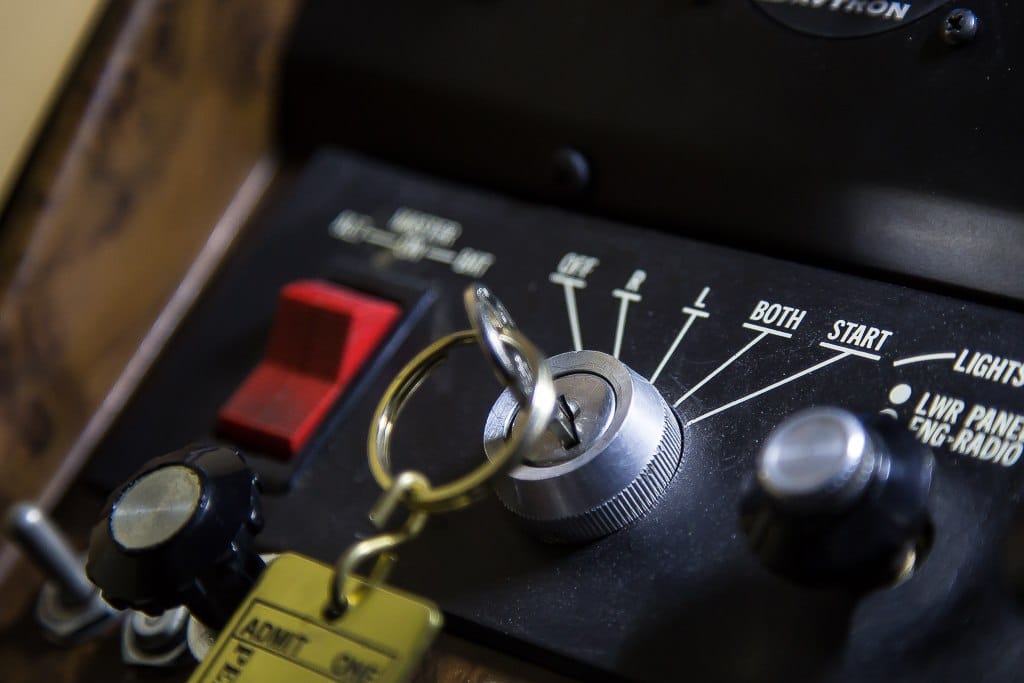Discussing Aircraft Magneto Checks
Pilots take comfort in knowing the aircraft they fly is airworthy. Careful preflight inspections are completed in order to satisfy ourselves that everything is in order. Then, before flight, the pre-take off check is completed. These checks not only prepare the aircraft for the upcoming flight by setting up the radios, adjusting the trim and setting the flaps but also to make sure the engine is running properly and all the systems work as they should.
Yesterday I got a call much like others I have received over the years that went something like this:
“I think we have a bad mag, the engine is real rough when I do the magneto test”.
I always ask the question “how much is the drop?”, meaning the magneto loss during the test.
The answer almost always is vague, like, “a lot, and it’s real rough”. I know from experience that a 250-300 rpm drop is almost for sure a spark plug malfunction and that it will cause the engine to feel uncomfortably rough and noticeably shaky in its mount. I will ask the pilot to quantify the amount of rpm loss during the test and describe how it felt. If I get good information I can normally troubleshoot and repair the problem a little quicker. When this type of malfunction occurs it is very obvious and the roughness is quite alarming to the pilot. He usually quickly returns the switch back to “both”, afraid he may be damaging something. This is a time for patience and allow the engine to run rough for a few moments and stabilize while observing the tachometer, noting the change.
Most pilots are well aware that the purpose of this test is to check each ignition system individually by turning one and then the other off. This allows him to measure the amount of performance loss when operating on each system. In a normal condition with both ignition systems operating together, defects in either magneto can be masked as they work together. This is why we test each side independently. The magneto switch has 4 positions, Off, Left, Right, and Both. Magnetos work together, but completely independent of each other and require no power source from the aircraft. In fact, they can be tested on a bench by simply twisting the drive mechanism on the base of the mag. The ignition switch provides a ground source that disables the magneto when you turn it off. This means when the switch is turned on the circuit is open and is the same as the wire to the magneto being disconnected. When “left” is selected, the right magneto is disabled because it becomes grounded through the switch while the left magneto wiring remains open allowing it to remain operational. Obviously the opposite is true when the “right” position is selected.
What we are saying here is that one of the two spark plugs in each of the cylinders are shut off when the pilot does the magneto test. This means if one or more of them are not functioning properly the cylinder it is threaded into will not fire and result in rpm loss and rough running.
This type of problem is usually quite easily repaired and if you are one of those “hands on” sort of people and like to work on your own equipment this is one of the tasks the FAA allows owners to perform under the preventative maintenance allowances.
Troubleshooting this type of problem is relatively easy if you have an understanding of the basics. It’s even easier if your aircraft has an engine analyzer.
If you are lucky enough to have one of these monitors troubleshooting a spark plug problem is as easy as watching the display during the magneto test. When all is normal the exhaust temperatures will each rise slightly when one magneto is turned off. This is because of incomplete burning in the combustion chamber. If one spark plug is fouled or failed the temperature will drop rapidly in that cylinder when tested. Read the monitor to find the cylinder affected and remove the spark plug attached to the magneto affected. Assuming the analyzer and magneto “P” leads are wired correctly and the ignition lead is not defective you will find the non-functioning spark plug.
Without an analyzer, the process is still simple but requires a couple more steps. With the cowling removed you should start the engine and immediately turn the ignition switch to the magneto that is rough. This should be done when the engine is cool, or at least not hot. Let the engine run for about 10 seconds and then shut it down. Climb out and check for a cold exhaust stack on one of the cylinders. You can do this with a spray bottle of water and squirt a small mist on each exhaust stack, right up near the cylinder. Each of them will hiss as the water hits the hot pipe except for one. This is where you will look for the bad spark plug. Often times a bad spark plug is obvious when you look at it. Sometimes they are caked with carbon and have developed a bridge between the electrodes rendering them inop. Other times they are oil soaked and sometimes they appear completely normal. If a tester is not available you can move the spark plug from its original location and trade it with the other in that same cylinder. Once you do this you can run the engine and complete another magneto test. If the spark plug was in fact, defective the test will reveal a drop on the opposite magneto.
Of course, there are sometimes abnormal conditions that lead to more complicated problems than what I have described here and will require professional help but understanding how the system works and how to troubleshoot it will make you a better pilot and give you a greater ability to deal with the problem when it comes up.
Magnetos have been the power source for providing reliable ignition systems on aircraft engines for many decades. Modern electronic ignition systems have become very popular and are widely used in experimental aircraft. They are reliable, improve performance and fuel economy and last a long time. Even with all these advantages they have been very slow to become approved for certified aircraft. They are just now becoming available for this application but are still fairly expensive. Magneto systems will continue to be the most common ignition source for years to come in certified aircraft. Even so, troubleshooting techniques will remain largely the same.
The next time you run up your aircraft before flight, I encourage you to think about these concepts and make efforts to better understand what is going on when you do aircraft magneto checks.
**Additional information: HERE a video series on airplane ignition systems
***Ignition systems on Wikipedia HERE
















Leave a Reply